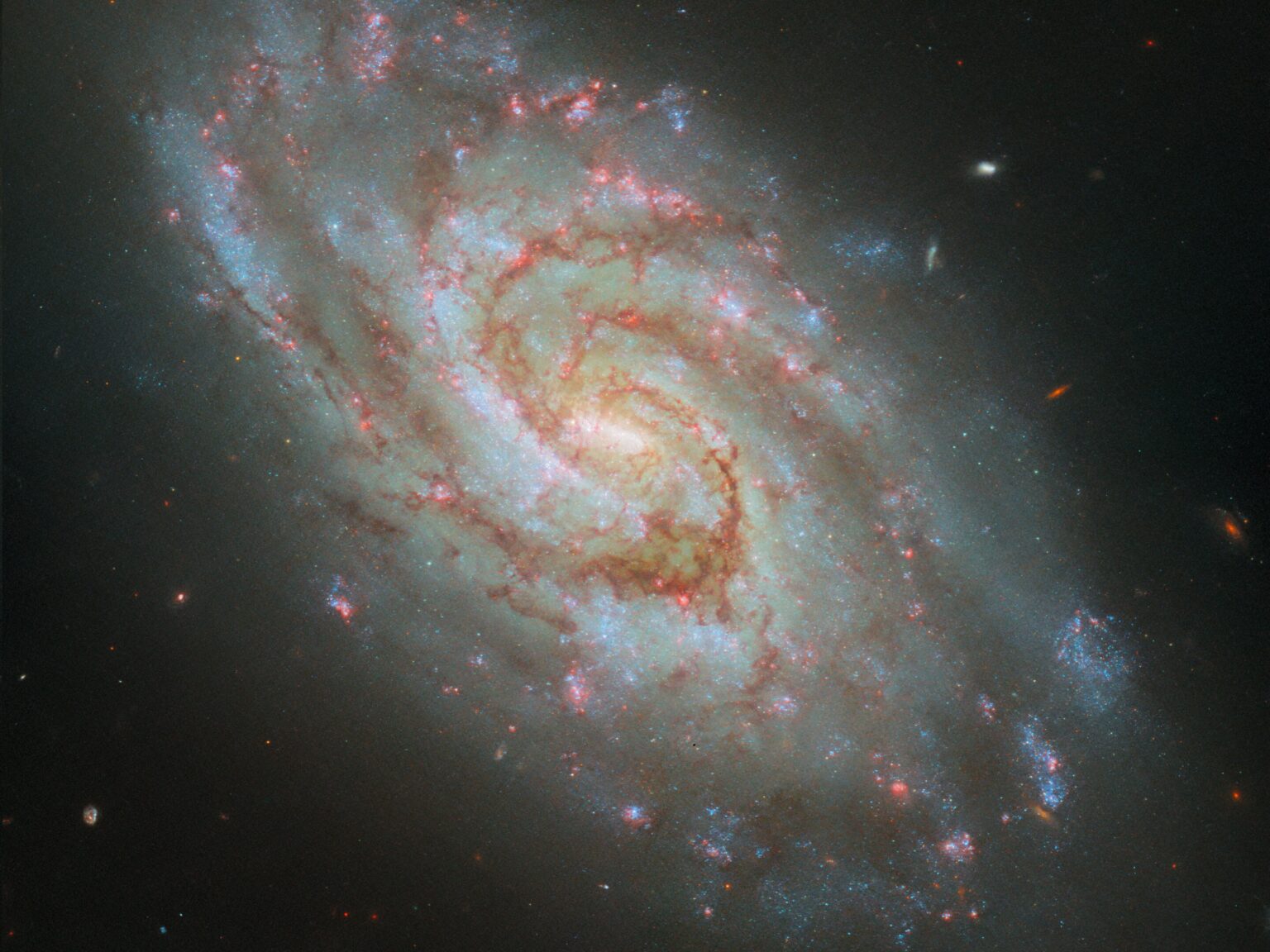The star system IC 1954, located 45 million light years away from us, is well known to scientists as a characteristic example of a galaxy with a bar. They recently looked deeper into it with the Hubble Space Telescope and found stellar nurseries — regions where new luminaries are born.

Hubble telescope image
Scientists working with the Hubble Space Telescope have recently obtained an amazing new photo of the galaxy IC 1954. This star system is located 45 million light years away from us in the direction of the constellation Pisces. It is well known to scientists as a typical example of a galaxy with a bar, but now they have been able to discover a lot more about it.
A bar or bulge is a formation near the galactic nucleus from which spiral arms seem to grow in both directions. This situation is common to many stellar systems at certain stages of their evolution.
In the new images, galaxy IC 1954 benefits from different colors. In fact, they correspond to specific wavelengths. The pink H-alpha regions are particularly interesting. They correspond to giant interstellar hydrogen clouds, where the formation of new luminaries takes place.
Stellar nursery
It is such regions of H-alpha that scientists call stellar nurseries. They are giant cold clouds in which seals finally form, giving rise to new stars. And now scientists know how they are distributed in other galaxies.
Actually, the topic of star-forming regions goes far beyond a single image. And while Hubble’s capabilities were key in obtaining it, astronomers still had to combine them with data from the Atacama Large Millimeter/submillimeter Array. And only by working together, they were able to create the image that everyone is now looking at.
The actual main question that everyone asks themselves is how exactly star-forming regions are clustered in galaxies. Since there is an assumption that the bars are actually the biggest of them all.
According to phys.org


